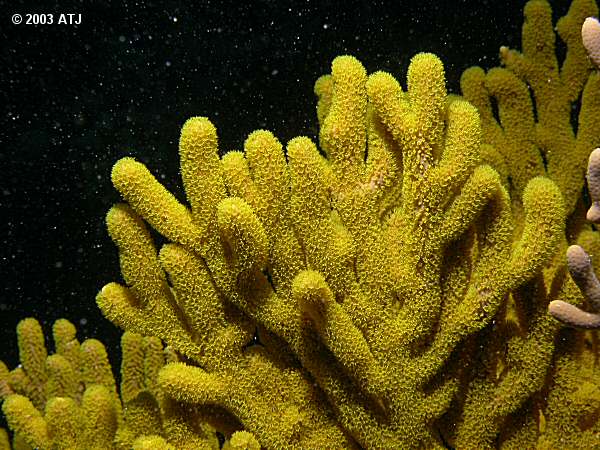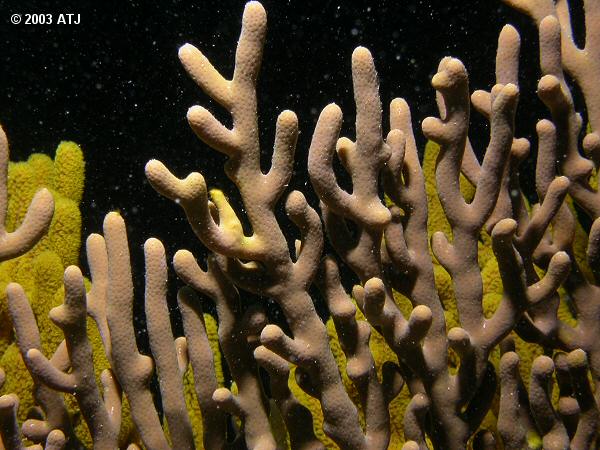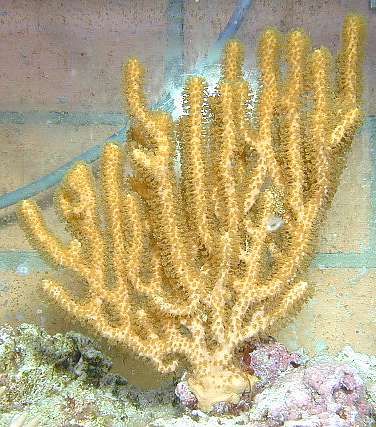Isis hippuris
Taxonomical systematics
Scientific name
Isis hippuris
Common names
Sea fan,
Genus
Isis Linnaeus, 1758
Family
Isididae
Suborder
Holaxonia
Order
Alcyonacea
Subclass
Octocorallia
Class
Anthozoa
Phylum
Cnidaria
Local ecology
Distribution
Tropical Western Pacific Ocean, Great Barrier Reef.
Biological characteristics
Description
Branches are smooth and cylindrical. Branching pattern is variable and colonies can be sparingly to richly branched. Branches are usually in a single plane, but colonies can be extremely bushy. Branches usually arise at right angles to the major branches and most then curve upwards. (Fabricius and Alderslade, 2001)
Polyps are small, monomorphic and completely retractile. They densely arranged all around the branches. (Fabricius and Alderslade, 2001)
The polyps and coenenchyme are similar in colour, being bright yellow to brown or green (Fabricius and Alderslade, 2001).
Zooxanthellate
Ahermatypic

Isis hippuris at Chinaman's Reef, Agincourt Reefs, Great Barrier Reef. Depth 10 m.

Isis hippuris at Tracy's Wonderland, Ribbon Reef #3, Great Barrier Reef. Depth 8 m.

Isis hippuris with polyps retracted at Tracy's Wonderland, Ribbon Reef #3, Great Barrier Reef. Depth 8 m.

Isis hippuris in aquarium.
Captive care
Lighting
Light tolerant.
Feeding
Sorokin (1991) found that 220% of their metabolic need for carbon could be met by products of photosynthesis, 1% by predation (zooplankton), 9% from bacterioplankton and 3% from dissolved organic matter. Supplemental feeding should not be necessary.
References
Fabricius K. and Alderslade P. 2001. Soft Corals and Sea Fans: A comprehensive guide to the tropical shallow-water genera of the Central-West Pacific, the Indian Ocean and the Red Sea. AIMS, Townsville, Australia. 264pp.
Sorokin Y.I. 1991. Biomass, metabolic rates and feeding of some common zoantharians and octocorals.. Aust. J. Mar. Freshwater Res. 42:729-741.